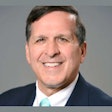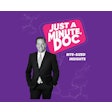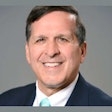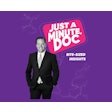
Many of us are reasonably happy with the way our favorite clothes make us look. They cover up flaws and sometimes even make things look better than they really are. Well, the same is true for dental practices across the U.S., where most practices look pretty good from the surface.
However, as we look past the surface, there are almost always things that we wish we could change or things that need to be changed for the good of the practice that we simply aren't aware of. These all can cause undue stress, anxiety, and inhibit overall performance.
 Curtis Marshall is the vice president of marketing at Dental Intel.
Curtis Marshall is the vice president of marketing at Dental Intel.As the Naked Dentist, I will remove all the "clothing," those items that cover up the flaws hidden within the practice. But not only will I uncover these flaws, I will offer solutions -- what can be done to improve the practice so that it looks good throughout, not just on the surface. Each month my team and I will analyze a new practice -- undress the practice, if you will. We will point out the positives and those things that -- simply put -- just don't look good. A fitness plan will be put in place to address identified issues, and an automated monitoring system will be leveraged to watch and measure the progress.
This month I am going to undress a doctor from Colorado. We'll call him Dr. Colorado for short. This dentist is top-notch and has been practicing for more than a decade. The whole community knows and loves the guy. Every time he walks into Walmart he is showered with acknowledgement. He works out of six operatories, and last year he collected $2.3 million.
In his shoes
Wouldn't you want to be in his shoes? On the surface maybe, but there is something clearly wrong with his practice, as he took home less than 7% of collections in 2014, whereas a healthy practice should be taking home between 40% to 45%. In dollars, he took home between $300,000 and $400,000 less than he should have.
On the surface, there are two possibilities: fraud or extremely high overhead. In both situations, doctors do not want to hear the outcome, fearing that it will make them look bad.
Getting naked
Once the office was stripped down, I discovered some very unpleasant features. The break-even point (BEP) of this practice was covered and not seen by Dr. Colorado. Where is your BEP? For those of you who know it and how to fully calculate it, you can skip this next section. For the rest of us, here is a brief explanation.
“Once the practice was stripped down I discovered some very unpleasant features.”
The BEP is the point at which cost or expenses and revenue are equal: There is no net loss or gain and one has "broken even." It is shown graphically as the point where the total revenue and total cost curves meet. In the linear case, the BEP is equal to the fixed costs divided by the contribution margin per unit.
Or in simple English, BEP is the point where you start making money.
This is different than overhead, because overhead is a percentage of collections, where the BEP is a fixed number. Once you hit the BEP, you still have expenses to run the practice.
The monthly BEP represents the average monthly production amount required to cover total costs. (Note that cost does not equal cash flow. When a practice is paying down loans, the needed production to cover cash flow can be significantly greater than the production needed to cover cost in the practice.) Because this is an average, there will be some months that require more and other months that require less production, but this will average out for the year.
There is no need for you to get a finance degree or hire someone with a finance degree as there are now practice intelligence tools where the break-even production amount will adjust automatically, along with many other key indicators. This includes the doctor's compensation (both for owners and associates).
What do we do to lower the BEP?
OK, if you skipped that explanation, welcome back.
What do we do to lower the BEP? I would first look at variable costs and make sure that supplies and lab fees are at a healthy level. Then I would look at overhead and ensure that this is at a healthy level. But, to know if overhead is healthy, you have to break it down into smaller categories to identify where the high expense is. The categories include the following:
- Payroll
- Facility and equipment
- Marketing and advertisement
- Business and administrative
- Associates' cost (separate this from other payroll)
- Owner's discretionary cost and compensation
Again, automated practice intelligence tools exist to assist. By looking at these categories, you can quickly identify if you are out of a healthy range in any of these areas. If you are unhealthy in payroll, you would then look deeper by looking at elements such as dental assistants, administration, and hygiene, each separately.
The cool thing about having financials in this order is that it's organized and easy to get to the root problem. Meaning if net profit looks good, then there's no need to drill further. If net profit does not look good, you look at each of these categories to identify which are being overspent. Once this is identified, you can quickly make the necessary changes and start watching your take-home cash increase.
A common problem that most business owners face is effectively monitoring these items. Even if the books are being kept, they are often not organized in a manner that allows the key areas of concern to be quickly identified. Those that know where they are in relationship to where they ought to be have a far better chance of reaching their desired level of performance. To ensure proper classification and recording of your financial data, and making it more usable, it is of great benefit to consult with a dental-specific certified public accountant (CPA) who is adept in employing the dental industry standard chart of accounts. There are several good ones out there and you will find them to be worth every single penny.
Why is this important?
We now know that Dr. Colorado has a BEP but is not hitting that point until the 27th or 28th of each month. By understanding the amount of production required for your practice to reach BEP, you can make sure your office has scheduled this production before the month begins, some practices might be able to hit BEP on the 10th or 15th, providing the entire team with more confidence and less financial stress. We will talk more about how that is done.
The next article of clothing to take off this practice will be revealed in the next column. Soon, we will have this dentist naked and perfect all his flaws.
Let's all look good naked.
Curtis Marshall serves as the vice president of marketing at Dental Intel. If you would like your practice to be in the next Naked Dentist column and have your practice undressed, contact him at [email protected] or 801-380-7070.
The comments and observations expressed herein do not necessarily reflect the opinions of DrBicuspid.com, nor should they be construed as an endorsement or admonishment of any particular idea, vendor, or organization.


















